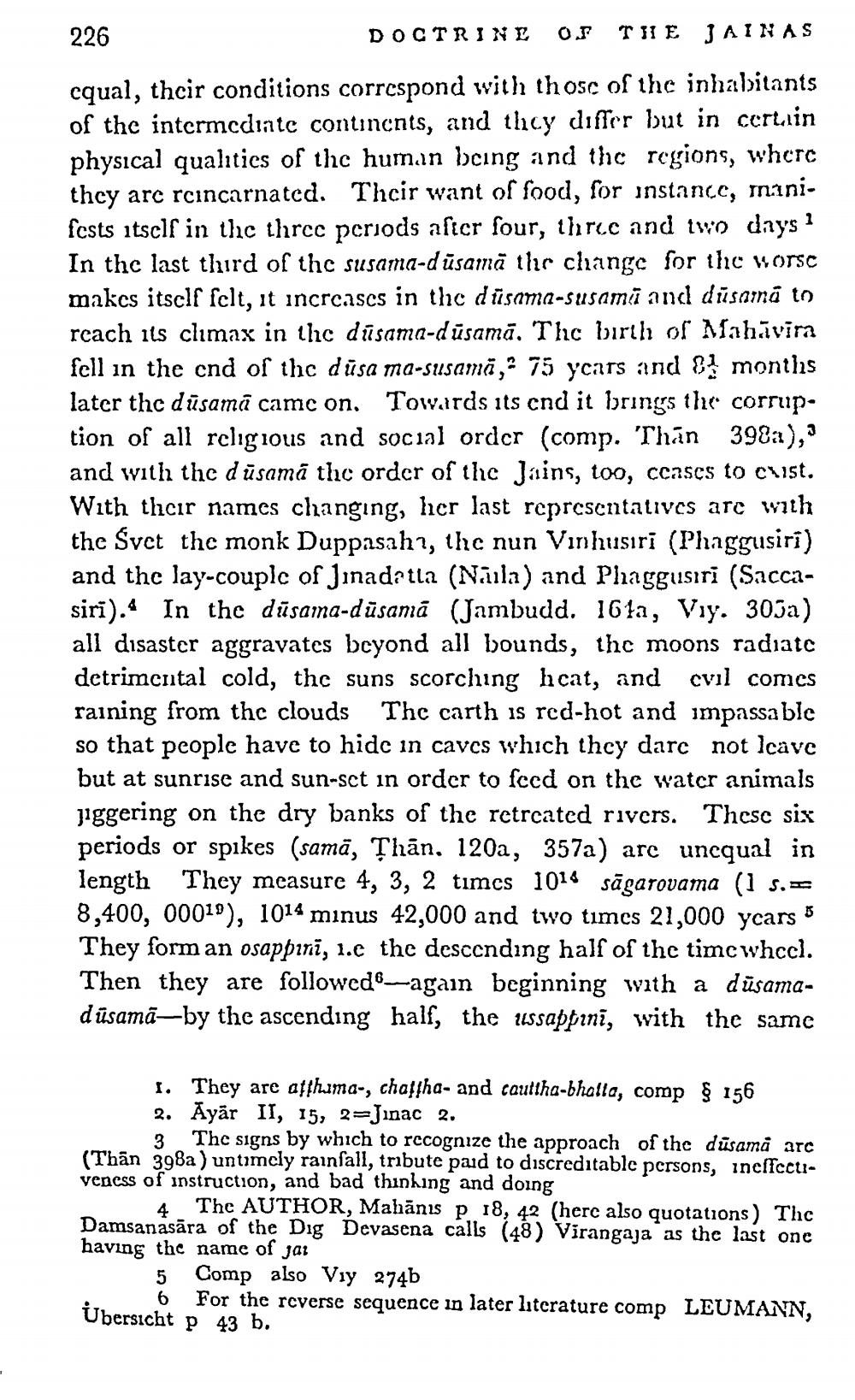________________
226
DOCTRINE OF THE JAINAS cqual, thcir conditions correspond with those of the inhabitants of the intermediate continents, and they differ but in ccrtiin physical qualities of the human being and the regions, where thcy arc reincarnated. Thcir want of food, for instance, minifests itself in the three periods after four, three and two days ? In thc last third of the susama-dūsamā the change for the worse makcs itself felt, it incrcascs in the dūsama-susama and disamā to rcach ils climax in the dusama-dūsamā. The birth of Mahāvira fell in the cnd of thc dūsa ma-susamā,” 75 ycars and 8 months later the dūsamā camc on. Towards its cnd it brings the corruption of all religious and social order (comp. Thân 398a), and with the dūsama the order of the Jains, too, ccases to cvist. With their names changing, her last representatives arc with the Svet the monk Duppasah, the nun Vinhusiri (Phaggusiri) and the lay-couplc of Jinada tla (Nila) and Phaggusiri (Saccasirī). In the dūsama-dūsamā (Jambudd. 161a, Viy. 303a) all disaster aggravates beyond all bounds, the moons radiato detrimental cold, the suns scorching h cat, and cvil comes raining from the clouds Thc carth is rcd-hot and impassable so that people have to hide in cavcs which thcy darc not lcave but at sunrise and sun-sct in order to fced on the water animals jiggering on the dry banks of the retrcated rivers. These six periods or spikes (samā, Thán. 120a, 357a) arc uncqual in length They measure 4, 3, 2 timcs 1014 sāgarovama (1 s.8,400, 00010), 1014 minus 42,000 and two times 21,000 ycars 3 They form an osappini, 1.e the descending half of the timcwhccl. Then they are followed-again beginning with a dūsamadūsamā—by the ascending half, the issappini, with the same
1. They are affhima-, chaffha- and cauttha-bhalla, comp 156 2. Ayar II, 15, 2=Jinac 2.
2 The signs by which to recognize the approach of the dūsama arc (Thân 398a) untimely rainfall, tribute paid to discreditable persons, incffccti. veness of instruction, and bad thinking and doing
4 The AUTHOR, Mahānis p 18, 42 (here also quotations) The Damsanasāra of the Dig Devasena calls (48) Virangaja as the last one having the name of jai
5 Comp also Viy 2746
6 For the reverse sequence in later literature comp LEUMANN, Übersicht p 43 b.




